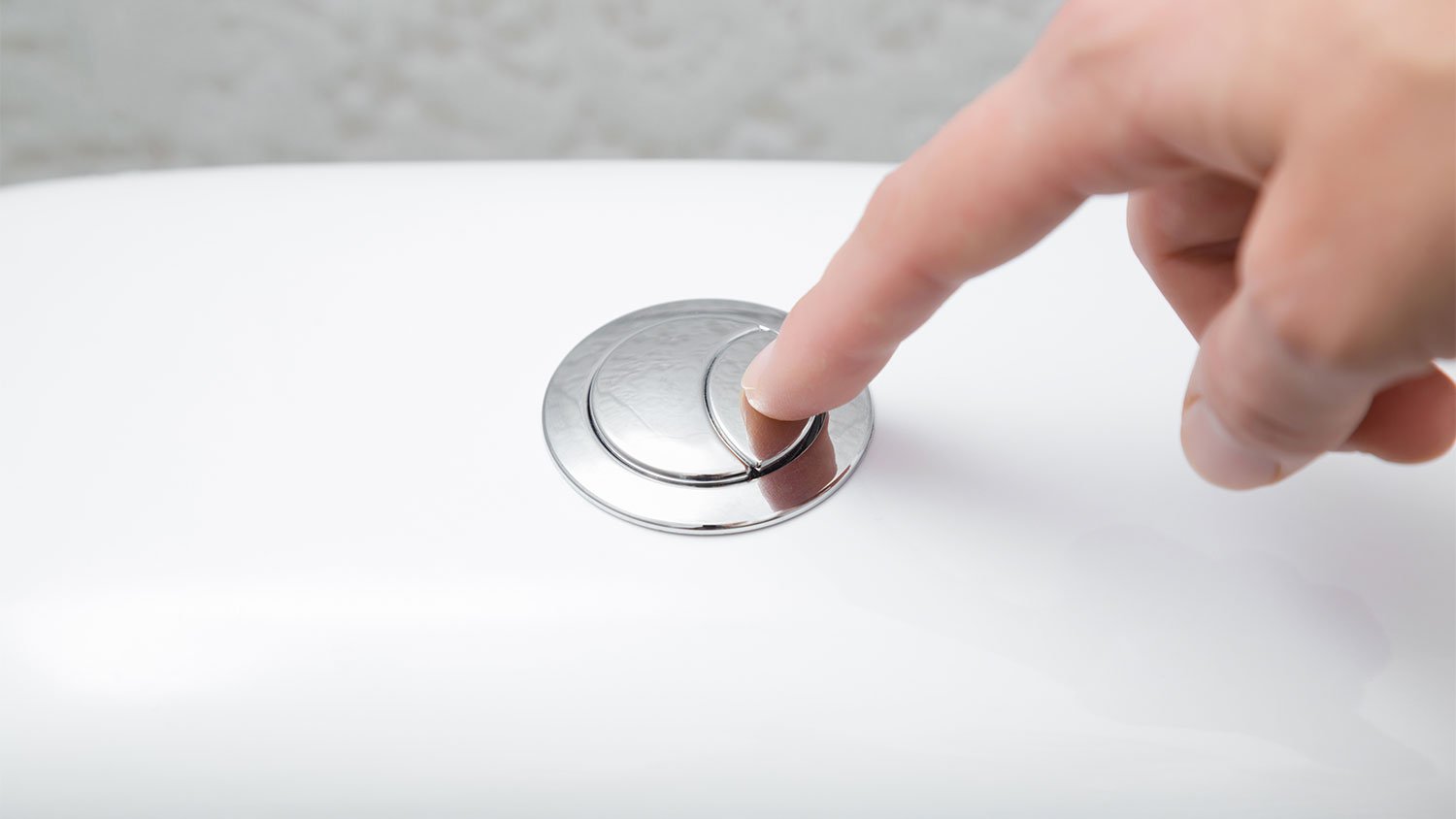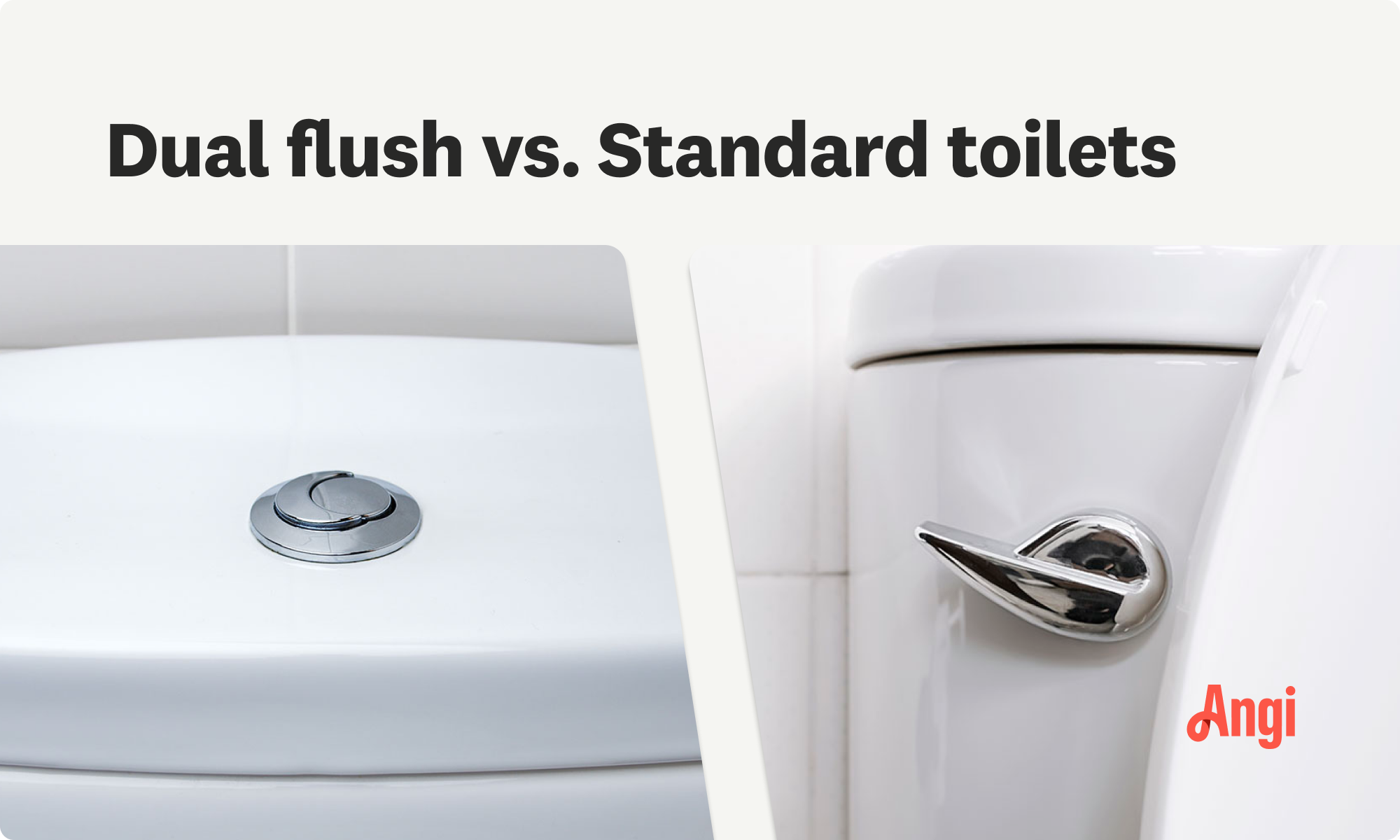
Discover the leading factors affecting your main water line replacement cost in Columbus, including length, material selection, and installation details.
Standard vs. dual flush (Hint: One of these toilets flush money down the drain)


Dual flush toilets feature two different buttons for flushing liquid and solids.
Dual flush toilets use a trapway mechanism for flushing waste.
You can reduce up to 67% of water consumption relative to a traditional toilet.
Pros of dual flush toilets include saving water and money, but they may require more regular cleaning.
As we evolve, so should our home. Think about it: When was the last time you updated your bathroom? If your commode (and maybe your showerhead could use an upgrade), consider a dual flush toilet. They’re the new way to conserve water, and they may just be a perfect addition to your home. When considering transitioning from traditional to dual flush, it’s essential to know what you’re getting yourself into.
Since there are so many different types of toilet systems, it’ll be helpful to take a close look at dual flush toilets to figure out if it’s right for you.
Dual flush toilets feature two different buttons that perform different flushes depending on the type of waste. One button is for liquid waste, while the other is for solid waste. Just as its name implies, this type of toilet has a dual operating mechanism you can engage at any time.

A dual flush toilet avoids inefficient flushing by using two different water volumes. You’d use the liquid waste button for, well, liquid, which will signal the toilet to perform a “half flush.” If you want to drain solid waste, you’d press the second button to trigger a high-volume flush.
The primary purpose of a dual flush toilet is to reduce water consumption.

Standard toilets use a siphoning tube to get rid of waste. When you flush the toilet, water fills the tube, and the tube pushes the water and waste down the drain. The siphoning action requires a high volume of water.
Dual flush toilets don’t use a siphoning tube. Instead, they use a larger trapway (the hole at the bottom of the toilet bowl) mechanism to push down water and waste. This process uses less water for every flush.
When considering switching to a dual flush toilet, you’ll want to consider all the major benefits.
The key benefit to using dual flush toilets is that you’ll conserve water. Dual flush toilets usually use around 1.28 gallons per flush, while older models use up to 3.5. Dual flush toilets can reduce up to 67% of water consumption relative to a traditional toilet.
According to the Environmental Protection Agency, the average family can save nearly 13,000 gallons of water each year by switching environmentally-friendly toilets.
With lower water usage comes lower water bills. When you make the switch, you save money each month.
Compared to traditional toilets, the dual flush design may cut down on clogging, saving you money on potential repairs. Essentially, fewer problems equal less toilet maintenance and fewer repairs.
Believe it or not, dual flush toilets are pretty affordable compared to other toilet types, such as low-flush, upflush, and wall-mounted options. On average, the cost of a dual flush toilet is around $350.
While you might be excited to evolve your toilet, make sure you know any potential downsides to getting a dual flush toilet. The biggest disadvantage? Cleaning. With a dual flush toilet, you may have to put in a little more work to properly clean your toilet.
This is because very little water stays in the bowl with a dual flush toilet. When there isn’t enough water in the bowl to flush everything away, you may wind up with some waste residue.
So, the dual flush toilet tends to get dirtier faster than a traditional one might. While these toilets tend to clog less than traditional ones, you may still have to grab your toilet brush semi-regularly.
From average costs to expert advice, get all the answers you need to get your job done.

Discover the leading factors affecting your main water line replacement cost in Columbus, including length, material selection, and installation details.

Learn about main water line repair costs in Columbus and what affects pricing to be prepared before you start getting estimates.

Learn how much plumbers cost in Columbus, Ohio. Discover pricing for faucet repairs, pipe work, and emergency services, plus how you can save money.

Fixing a leaky faucet starts with knowing which type of faucet you have. Follow these steps to learn how to fix a leaky faucet in no time.

Need to stop a plumbing leak quickly and minimize water damage in your home? Buy yourself some time with these temporary fixes for a leaking pipe.

Want to get water down your drains quickly and efficiently? You need the right sink drain pipe size. Learn here how to find the right size and how to measure.